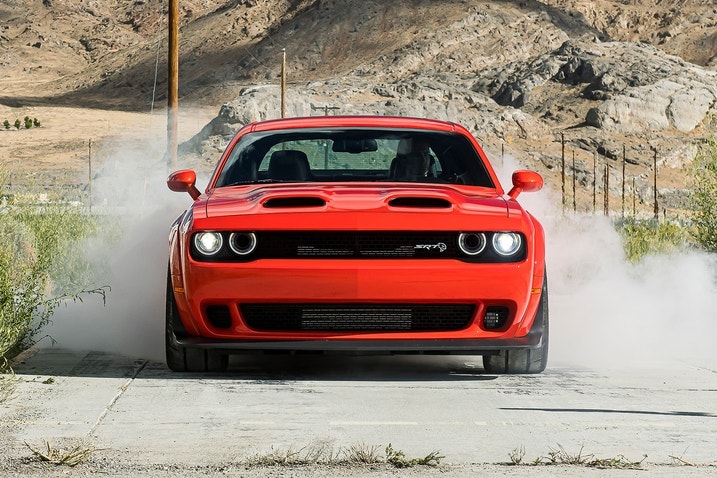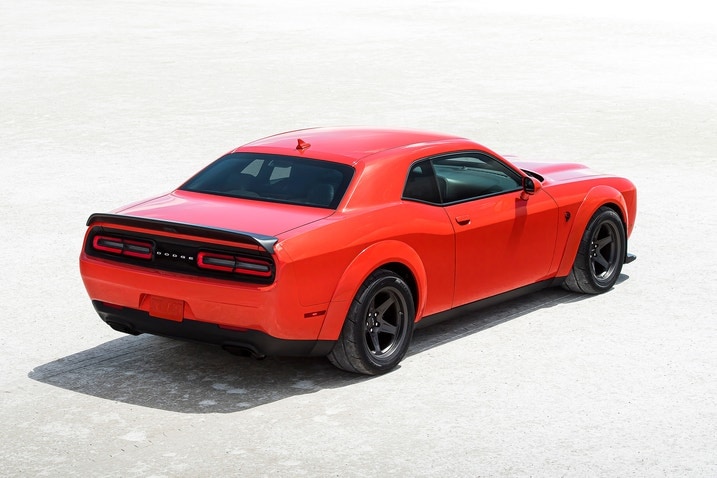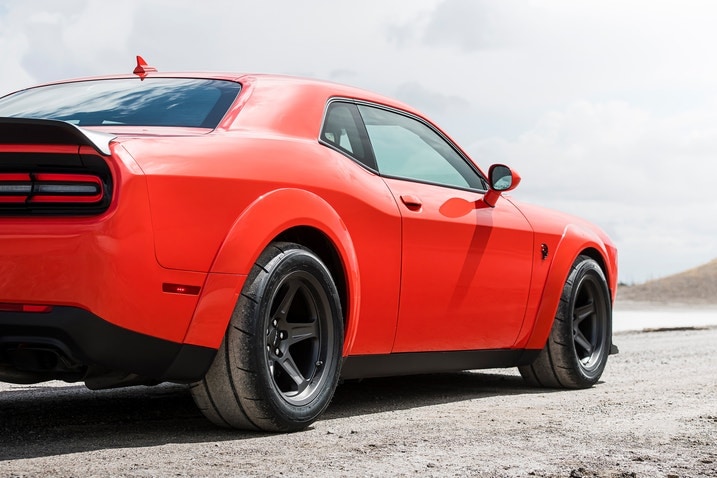- Farewell to the Hellcat V8, which Dodge stopped producing recently.
- Dodge is planning to enter the EV market soon.
- The Hellcat engine is more than its sound; it provides capable power that will be missed.
A Hellcat-Sized Goodbye to One of Our Favorite Muscle Cars
These loud, ridiculous, powerful engines will be missed
Electric cars are the future, headlines scream over and over ad nauseum. Yes, we get it. EVs offer a zero-emission drive. They’re quieter. More efficient. Sleek.
But what do I do about this Hellcat addiction? The sound. The vibration. The sheer, raw display of power that shakes up your insides, sending a shockwave from the base of your spine to your brain. It’s hard to say goodbye to this beast of an engine, but it’s going to happen. Last year was the final year of the Hellcat engine; Dodge has already previewed an electric car called the Charger Daytona SRT, and it’s a different kind of animal entirely.
It’s the start of a long goodbye.
Powerful and capable V8s
When I was a kid, my parents took me and my sister to classic car shows, and we’d marvel at the sound of a small-block Chevy or powerful Ford. In high school, my first prom date picked me up in his 1966 Ford Mustang with an unmistakably loud Cherry Bomb glasspack muffler; I grinned with delight. That wonder and awe never left me.
In 2015, Dodge debuted the Hellcat engine in the 2015 Dodge Challenger SRT coupe, and the supercharged 6.2-liter V8 made a huge splash. The American brand called this muscle car "the most powerful muscle car ever” and it was no joke with 707 horsepower that knocked your socks off. But I’m hooked on Hellcat not just because it reminds me of my youth, but because it’s ridiculous and fun and, above all, brutally capable.
I had a 2023 Dodge Durango SRT Hellcat in my driveway last week and was once again smitten. Heads turned as I rolled into the parking lots of the local grocery store and the post office, and even kids at the middle school stared and pointed as I drove away.
During the first pandemic summer in 2020, I borrowed a Durango SRT to tow a 7,500-pound, 33-foot camper up to the top part of the Michigan mitten. When I showed up at the camper owner’s home with the Durango, he looked at the SUV skeptically and said, “Are you sure you can tow it with this?” It performed perfectly, albeit loudly — my dad was sitting in the passenger seat, and we had to raise our voices to be heard. That didn’t matter, though. We had the soundtrack of eight pumping pistons keeping us entertained.
Electric cars and trucks are already here
I got behind the wheel of a four-motor, 1,000-horsepower Rimac Nevera once, and it was unsurprisingly exhilarating. The engineer who introduced me to the supercar drove the first leg and as we hit the highway, he asked me if I would mind if he punched it. The word “no” had barely left my lips when he pressed his right foot down and images of the Millennium Falcon’s hyperdrive mode flashed before me.
Similarly, Ford’s F-150 Lightning is everything I’d want in a truck, and my family used one to move from our old house to the new one, loading in haul after haul of our worldly possessions. It zipped up the road with a swish swish sound, moving and sounding like a steel butterfly.
Driving it back-to-back with the Durango Hellcat is the difference between listening to the Cool Jazz and Hair Nation channels on XM. Imagine what it’s like to sit in a library versus dancing to a booming audio system in a club. Both enjoyable experiences, but very different. Personally, I prefer to do my writing in a busy coffee shop because I like the energy all around me. It makes my brain work better.
Maybe that’s why the “Last Call” plaque under the hood of a 2023 Dodge Charger Super Bee Special Edition prompted feelings of sadness. While not a Hellcat, it’s a similarly visceral experience: the naturally aspirated 6.4-liter powerplant cranks out 485 horsepower and 470 lb-ft of torque. Now, it’s a relic: The last of these V8s was built on December 22, leaving the Chrysler 300, Ram 1500 TRX, Dodge Challenger and Dodge Charger behind.
Gas-powered engines aren’t going extinct anytime soon. However, with Dodge’s announcement that it will reimagine its muscle cars, the Hellcat roar will be just a memory.
In the meantime, I’m going to appreciate it as long as I can. VROOM.
Edmunds says
Dodge can teach a master class on muscle car power and brute force. Whatever it's planning next is sure to be spectacular, albeit different from the legendary Hellcat V8.




 by
by